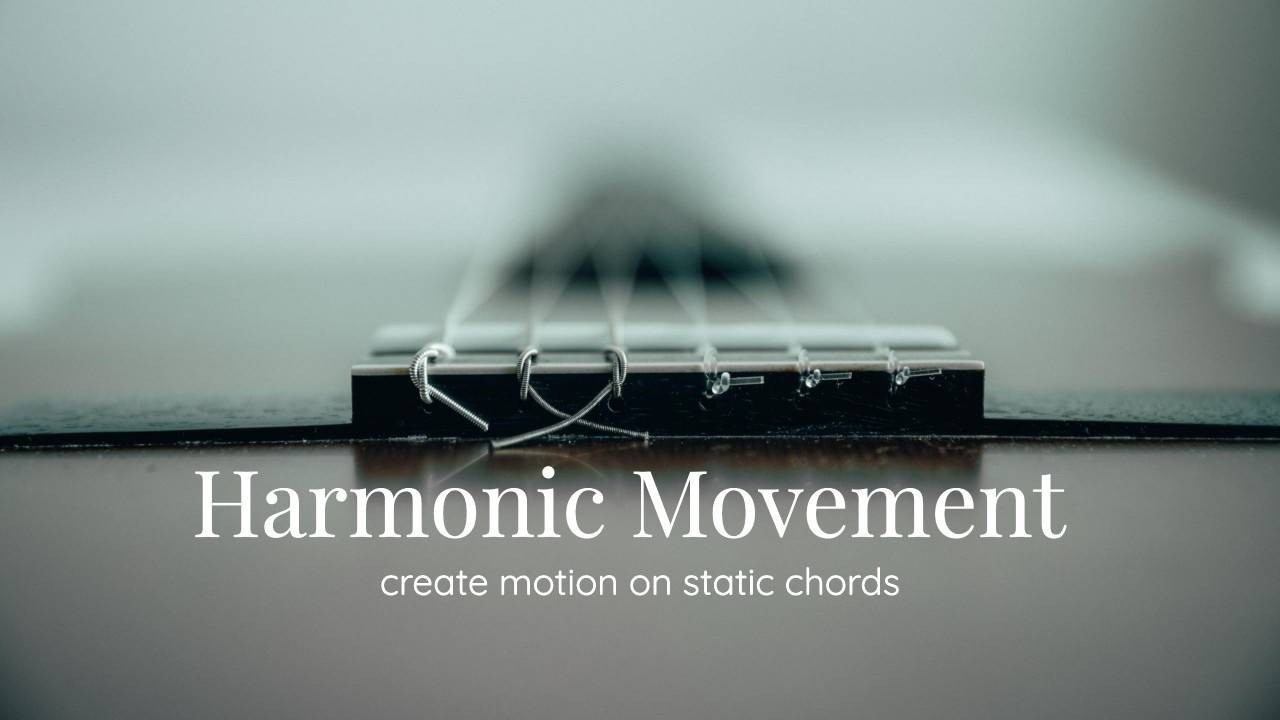
Harmonic Movement
Dec 10, 2020Create Motion On Static Chords
The goal of this series is to actually put a lick under your fingers. Here, there’s no more searching for ideas in the sea of jazz theory information. We’ll give stuff you need to play and be creative. In this issue, we will be discussing how you can create motion on static chords to add some interest to your comping.
harmonic movement-post-feature
Let’s get started on today’s concept!
Original Idea
Today’s idea is taken from the April 2016 Tune of the Month Club for the tune, “Body and Soul”. We’re going to show you how you can add harmonic interest to your playing by creating motion over static chords.
Download ALL of the licks here: "Create Motion On Static Chords"
Join our Community here.
Often times, a tune will have the same chord for an entire bar. While it is perfectly fine to just grab the chord and play it, many jazz players like to add some motion to it to keep things interesting. Using some basic substitution techniques and chromaticism, we will go over a few different ways to do this.

The Theory
There are tons of ways to create motion on static chords. Today, we are using devices like chromaticism and basic tritone substitutions to achieve this. The most important thing to take away here is that it’s all about good voice-leading practice. As long as you get to your target chord, you can get away with a lot as long as your voice-leading is good.
Examples
Next, I’d like to give you a few more ways you can achieve this effect with some different approaches.
Example A
Here is Example A. In this example, we are simply playing chords related to D Dorian - Dm11, Em11, and F6/9 - then chromatically approaching the G7 with the F#. Then, for G7, we are playing a G9 followed by Db13 and moving the top note melodically down to the Cmaj7. Note: Always pay attention to the melodies you create with your comping.

Example B
Here is Example B. Here, we are using some quartal voicings and some chromaticism to create motion over the Ab7, then we are approach Dbmaj7 with the same chord a half-step below.

Example C
Here is Example C. Here, we are giving you a progression you can play over basic turnarounds. The focus is on the melodic movement of the top line. Underneath, it’s basically a combination of tritone subs and chromaticism.

Thanks for joining us for Hands-On Jazz Guitar, Volume 10. Hopefully, with some of the information provided here, you will be able to create some more interesting comping.
Download ALL of the licks here: "Create Motion On Static Chords"
Join our Community here.
Please, ask us questions and give us feedback. We’re here for you. And if you liked this lesson, please subscribe to our YouTube channel where you can find many more like this!
You can also tell your friends and everyone else by sharing this lesson. Spread the word!
**Note from the editor** This post was updated 12/10/2020. Feature images, video and images updated.









